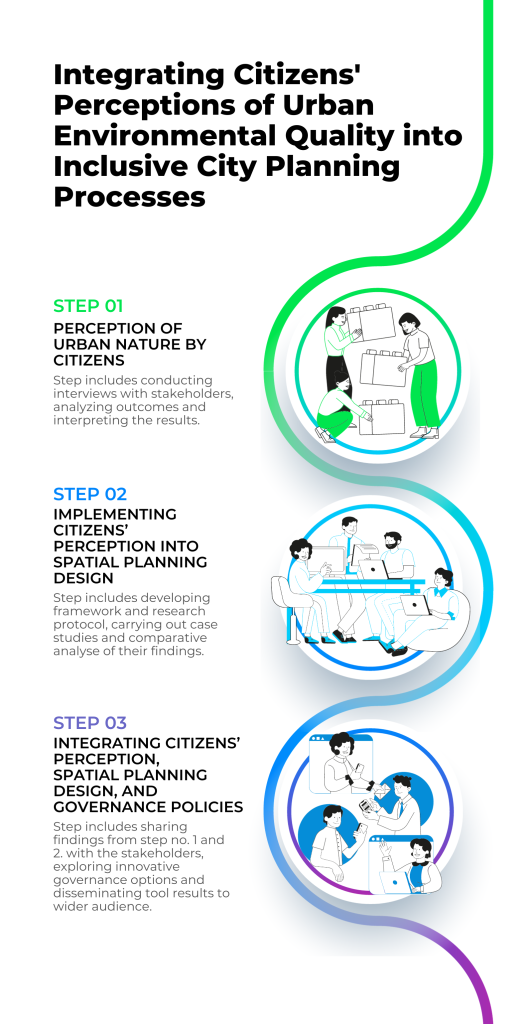Integrating Citizens' Perceptions of Urban Environmental Quality into Inclusive City Planning Processes
Guidelines to Support Interaction of Community, Science, and Governance
About
Integrating Citizens' Perceptions of Urban Environmental Quality into Inclusive City Planning Processes
Ensuring citizens’ active participation in urban planning processes is crucial for creating livable and resilient urban environments. This guideline places a specific focus on urban nature, recognizing its pivotal role in fostering urban resilience and enhancing the overall quality of urban living. Acknowledging the complex relationships citizens have with ecosystems and biodiversity in cities, the guidelines provide a framework for classifying urban ecosystem disservices. It aims to understand their specific characteristics in diverse urban contexts and suggests mechanisms for mediating citizen preferences and addressing disservices through effective management interventions, communication strategies, and awareness campaigns. Central to the guidelines is a decision-making tree that facilitates optimal solutions based on the nature of the ecosystem disservice and its current perception.
This tool is applicable to a diverse audience, including researchers, urban planners, city managers, environmental activists, and citizens, offering a practical approach to harmonizing urban nature with citizens’ needs for a comfortable urban environment.
Target group
- researchers
- urban planners
- citizens
- environmental activists
- local governments
Benefits of using the Tool
- Understanding existing and potential conflicts between citizens and urban nature
- Prevention and resolution of such conflicts
- Ensuring the inclusive character of planning process in the city
- Ensuring the acceptance of certain aspects of urban ecosystems and biodiversity in the city
- Development of new nature-based solutions reflecting on the characteristics of urban nature and preferences by citizens

